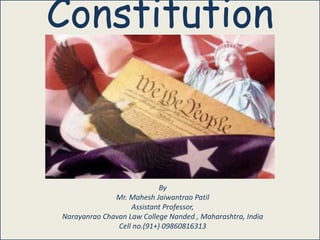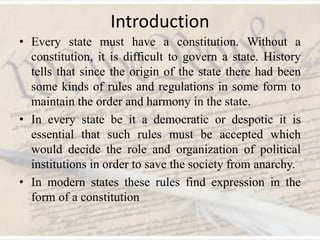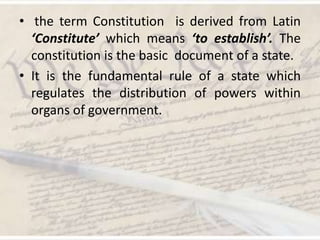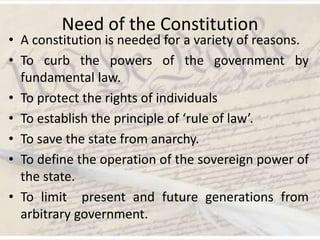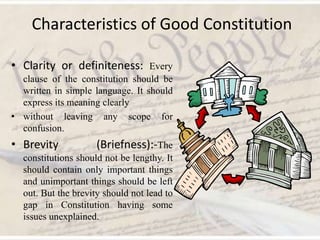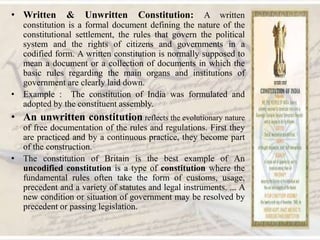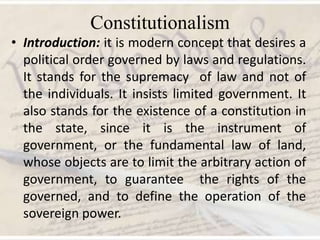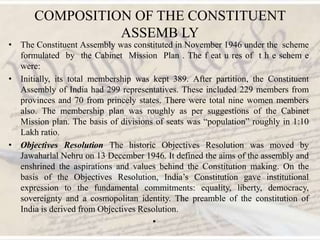The document provides a comprehensive overview of the concept of the constitution, its definitions, characteristics of a good constitution, and the process of constitutionalism in India. It explores various classifications of constitutions, including written vs. unwritten and flexible vs. rigid, and details the formation and function of India's constituent assembly. Key figures, historical contexts, and essential principles that underpin the constitution-making process are discussed, highlighting the importance of constitutional governance in ensuring rule of law and protecting citizens' rights.
